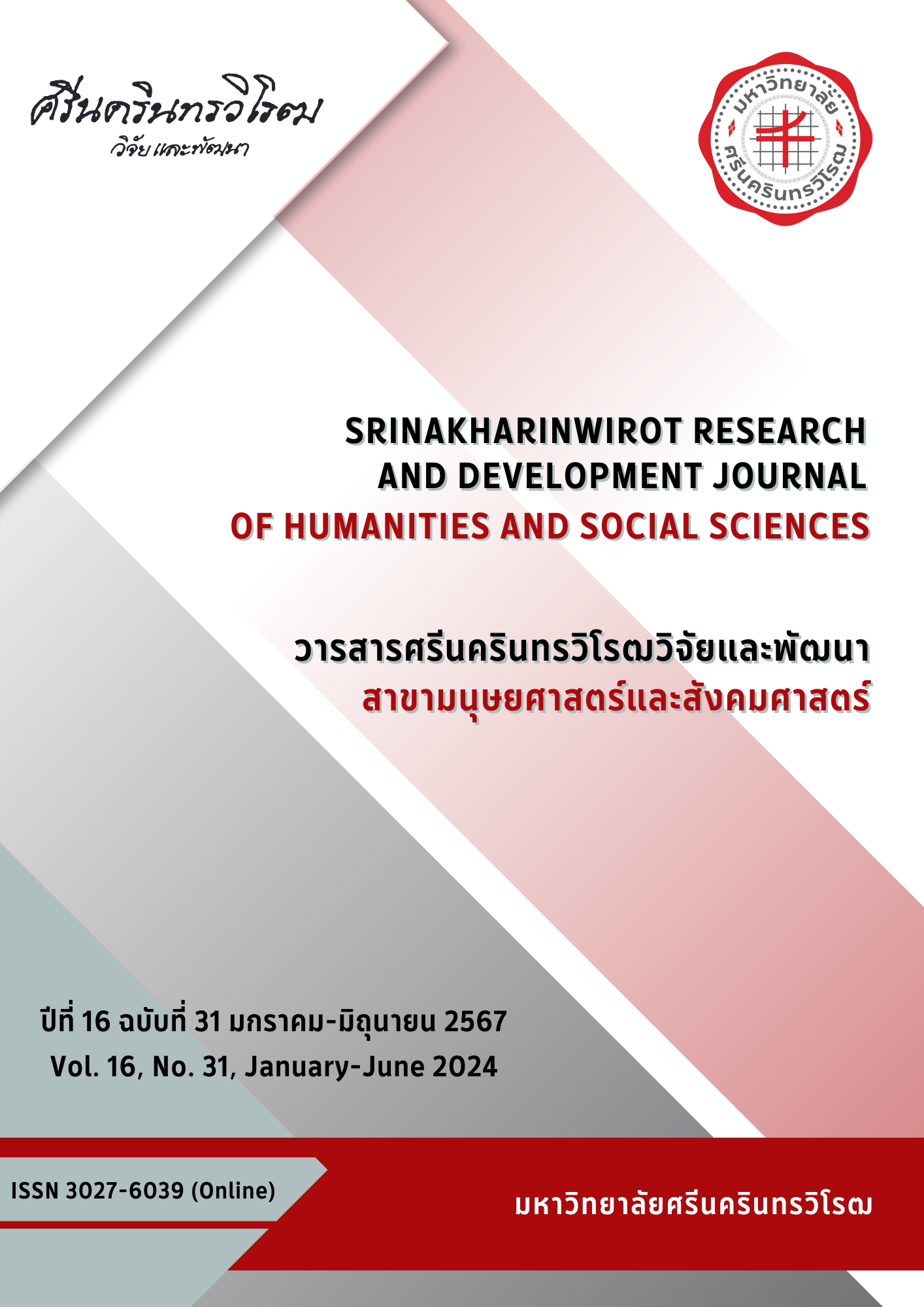THE RATE OF SUICIDE AND FACTORS ASSOCIATED WITH SUICIDAL BEHAVIORS: A CASE STUDY OF SUPHANBURI PROVINCE
Keywords:
Suicide Rate, Suicidal Behaviors, Related Factors, Suphanburi ProvinceAbstract
Suicide is a crucial mental health problem all over the world and the statistical trends towards the suicide rates have dramatically increased. In Thailand, Suphanburi province had held the high rate of suicide in almost every year, which the suicide rate was higher than the limit in the Department of Mental Health, Ministry of Public Health, Thailand. This retrospective descriptive research aimed to examine the suicide rate and factors related to suicidal behaviors in Suphanburi. The sample consisted of 854 cases with committed suicides, which the data were obtained from the suicide surveillance report (report 506 DS) during 2014 - 2018. The data were analyzed using descriptive statistics – number, percentage, rate, average, median, maximum and minimum. Research findings revealed that the number of suicides in Suphanburi had approximately 151 - 187 people per year during that period. The average suicide rate was categorized by age and gender. The result showed that female were more likely to attempt suicide than male. The average age group was 35.98 to 38.03 years (Min = 12, Max = 94). The majority of people who attempted suicide were married, employee or labor, and lived in the city area. The completed suicide rates were 2.71 - 4.24 per 100,000. Factors related to suicidal behaviors showed that male was more likely to completed suicide than female. Moreover, attempted suicide rates were 13.54 - 18.97 per 100,000, which female has a higher rate in attempted suicide than male. Most of the cases were first time self-harm or self-injury. In cases of the repetitive deliberate self-harm behavior were mostly found within two years after previous history of self-harm, and this may cause in long-term follow-up. Hanging had been the most common method of the completed suicides, while self-poisoning or drug overdoses were founded in people with attempted suicides. The main reasons for leading cause of death by suicide were chronic diseases, HIV/AIDS, disability, intimate partner violence, being hurt by blame, depression, and unhappy love affairs or chaotic sexual relationships. These main causes of suicide were similar to the attempted group, except chronic diseases, HIV/AIDS and disability. In addition, major physical health conditions including high blood pressure, diabetes, mental disorder, paralysis, cerebrovascular disease, Poliomyelitis, HIV/AIDS and addictive substances, especially cigarettes/tobacco, alcohol, and drug abuse were represented in both groups. Findings from this study suggest that the effective development of mental health and psychiatric service network in health areas is implementation according to the development plan for health service system and management, especially improvement in the process of reporting of suicidal behaviors in the suicide surveillance report (report 506 DS). The improvement suicide monitoring includes patient referral system, public awareness of suicidal behaviors and warning signs, and prevention of suicides, especially in the first year of self-harm, along with monitoring suicidal behavior continuously within 2 years. The promotion of pro-active activities and approaches in all age groups should emphasize improving the social relationships and the contribution of problem-solving management in mental health care.
Downloads
References
World Health Organization. (2000). Preventing sucide: A resource for general physicians. Department of Mental Health. Geneva: World Health Organization.
World Health Organization. (2019). Risk of countries by suicide rates. Retrieved from https://en.wikipedia.org/wiki/List_of_countries_by_suicide_rate
กรมสุขภาพจิต กระทรวงสาธารณสุข. (2564). รายงานอัตราการฆ่าตัวตาย ปี พ.ศ. 2540-2562. สืบค้นจาก https://www.dmh.go.th/report/suicide/stat_prov.asp
กรมสุขภาพจิต กระทรวงสาธารณสุข. (2555). รายงานผลการศึกษาเชิงระบาดวิทยาการฆ่าตัวตายของกรมสุขภาพจิต. สืบค้นจาก http://suicide.jvkk.go.th/menu3.aspx
Durkheim, E. (1996). Suicide. New York: Mc Millan Publishing.
วราภรณ์ ประทีปธีรานันต์. (2557). อัตราการฆ่าตัวตายและปัจจัยที่เกี่ยวข้องกับพฤติกรรมฆ่าตัวตาย โรงพยาบาลเจ้าพระยายมราช จังหวัดสุพรรณบุรี. วารสารการพยาบาลจิตเวชและสุขภาพจิต, 28(3), 90-103.
กายสิทธิ์ แก้วยาศรี, บุญมา สุนทราวิรัตน์, และนิตยาภรณ์ โคตรแก้ว. (2564). สถานการณ์และแนวทางการป้องกันการฆ่าตัวตาย: มุมมองผู้มีส่วนได้ส่วนเสียจังหวัดเลย ประเทศไทย. วารสารวิชาการสาธารณสุขชุมชน, 7(3), 112-126.
อนุพงศ์ คำมา. (2556). ปัจจัยที่เกี่ยวข้องกับการฆ่าตัวตายสำเร็จ: กรณีศึกษาจังหวัดสุโขทัย. วารสารสมาคมจิตแพทย์แห่งประเทศไทย, 58(1), 3-16.
กลุ่มงานยุทธศาสตร์และข้อมูลเพื่อการพัฒนาจังหวัด สำนักงานจังหวัดสุพรรณบุรี. (2563). บรรยายสรุปจังหวัดสุพรรณบุรี ประจำปี 2563. สืบค้นจาก https://ww1.suphanburi.go.th/files/com_news_devpro1/2020-07_7047b7baac73ec2.pdf
ธัญชนก บุญรัตน์. (2559). พฤติกรรมการฆ่าตัวตายของผู้ป่วยที่มารักษาที่คลินิกจิตเวช โรงพยาบาลหาดใหญ่. วารสารวิชาการแพทย์ เขต 11, 30(1), 101-109.
วันรวี พิมพ์รัตน์, และจินตนา กมลพันธุ์. (2563). ปัจจัยเสี่ยงต่อการฆ่าตัวตายซ้ำในผู้ป่วยจิตเวชโรงพยาบาลบุรีรัมย์. วารสารการแพทย์โรงพยาบาลศรีสะเกษ สุรินทร์ บุรีรัมย์, 35(3), 739-748.
นภดล สำอาง. (2563). ปัจจัยที่เกี่ยวข้องกับการพยายามฆ่าตัวตาย โรงพยาบาลพระปกเกล้า จังหวัดจันทบุรี. วารสารวิชาการสำนักงานสาธารณสุขจังหวัดมหาสารคาม, 4(8), 266-276.
ศศิธร กมลธรรม, และรุ่งระวี แก้วดี. (2561). ปัจจัยที่สัมพันธ์กับการฆ่าตัวตายสำเร็จในเขตเมืองจังหวัดลำปางด้วยการสืบค้นหลังเสียชีวิต ตุลาคม 2553 – กันยายน 2556. วารสารสมาคมจิตแพทย์แห่งประเทศไทย, 63(1), 47-54.
วรสิทธิ์ เจริญศิลป์, วาสนา สุปินนะ, จุฑามาส สุขอิ่ม, และศุภชัย นาทองไชย. (2562). การฆ่าตัวตายของนักศึกษากับการปรับตัวของครอบครัว มหาวิทยาลัยและรัฐ: การศึกษาโดยใช้ข่าวในหนังสือพิมพ์เป็นฐาน. วารสารศรีนครินทรวิโรฒวิจัยและพัฒนา (สาขามนุษยศาสต์และสังคมศาสตร์), 11(21), 135-147.
Apter, A., and Wasserman, D. (2003). Suicide in children and adolescents. Retrieved from https://www.ncbi.nlm.nih.gov/pmc/articles/PMC2542916/
ปรารถนา คำมีสีนนท์, พรดุสิต คำมีสีนนท์, จิตภินันท์ โชครัศมีหิรัญ, เอมหทัย ศรีจันทร์หล้า, สุนันทา คำชมพู, และวัชรีวัลย์ เสาร์แก้ว. (2563). การศึกษาปัจจัยเสี่ยงและปัจจัยปกป้องของผู้พยายามฆ่าตัวตายในเขตบริการสุขภาพที่ 7. วารสารป้องกันการฆ่าตัวตายแห่งประเทศไทย, 1(1), 25-40.
จีระนันท์ คำแฝง. (2563). พฤติกรรมการฆ่าตัวตายสำเร็จของประชาชนอำเภอเขื่องใน จังหวัดอุบลราชธานี. วารสารสำนักงานป้องกันควบคุมโรคที่ 10, 18(2), 7-18.
Downloads
Published
How to Cite
Issue
Section
License
Copyright (c) 2024 Srinakharinwirot Research and Development Journal of Humanities and Social Sciences

This work is licensed under a Creative Commons Attribution-NonCommercial-NoDerivatives 4.0 International License.
Srinakharinwirot Research and Development Journal of Humanities and Social Sciences is licensed Under a Creative Commons Attribution-NonCommercial-NoDerivs 4.0 International (CC-BY-NC-ND 4.0) License, Unless Otherwise Stated. Please Read Journal Policies Page for More Information on Open Access, Copyright and Permissions.



